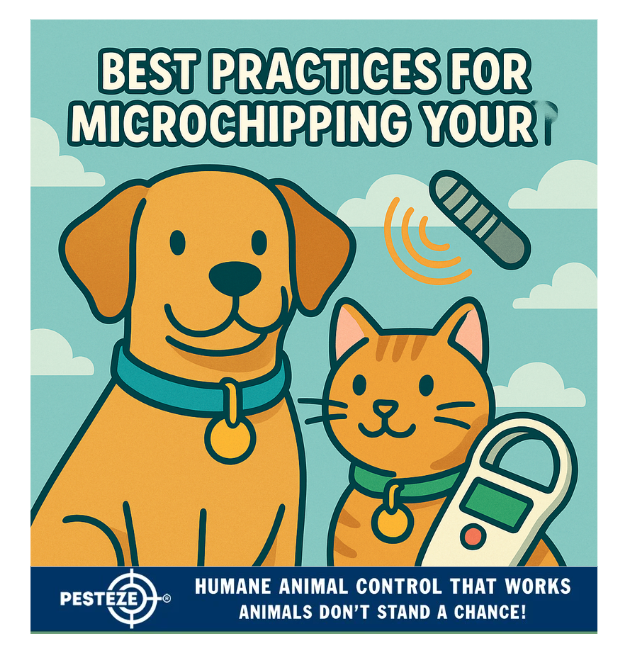BEST PRACTICES FOR MICROCHIPPING YOUR PET

BEST PRACTICES FOR MICROCHIPPING YOUR PET
SUMMARY
Microchipping is one of the most reliable ways to ensure your pet can be identified and returned if lost. This guide outlines the best practices for microchipping your pet safely and effectively.
FEATURES
-
Choose a professional: Have the procedure done by a licensed vet.
-
Register the chip: Ensure your contact details are up to date.
-
Verify functionality: Request regular scans to confirm the chip works.
-
Update information: Change phone or address details promptly.
-
Combine with ID tags: Use both microchips and collars for safety.
-
Check adoption pets: Verify microchip registration after adoption.
GUIDE DESCRIPTION
Microchipping your pet is a simple yet powerful step to safeguard them if they ever get lost. Unlike collars and tags that can fall off, microchips provide a permanent form of identification that significantly improves the chances of being reunited with your furry friend.
The first step is to choose a professional veterinarian or licensed technician to perform the procedure. Implanting a microchip is quick, safe, and relatively painless, similar to a routine vaccination. Ensuring it’s done correctly reduces the risk of complications.
After the chip is implanted, it is crucial to register the microchip with your contact details. A microchip is only useful if the information linked to it is accurate. Without registration, shelters or vets cannot contact you if your pet is found.
To maintain security, verify the chip’s functionality regularly. During vet checkups, request a scan to confirm the chip is still readable. This ensures the microchip continues to work properly over time.
It’s also important to update your information promptly. If you move or change phone numbers, log in to the microchip registry to make the updates. Many pets go unclaimed because outdated details prevent shelters from contacting owners.
For added protection, combine the microchip with traditional ID tags. Collars and tags make identification immediate, while the microchip acts as a backup in case the tags are lost. Together, they create a reliable identification system.
If you adopt a pet, always verify their microchip status. Sometimes, previously microchipped pets are not registered to the new owner. Updating the registry ensures the pet is properly linked to you.
Microchipping is an affordable, effective, and permanent way to protect your pet. By choosing professional implantation, keeping information current, and combining microchips with visible ID, you give your pet the best chance of coming home safely if they ever get lost.
- Saneeth Thota


Comments 0